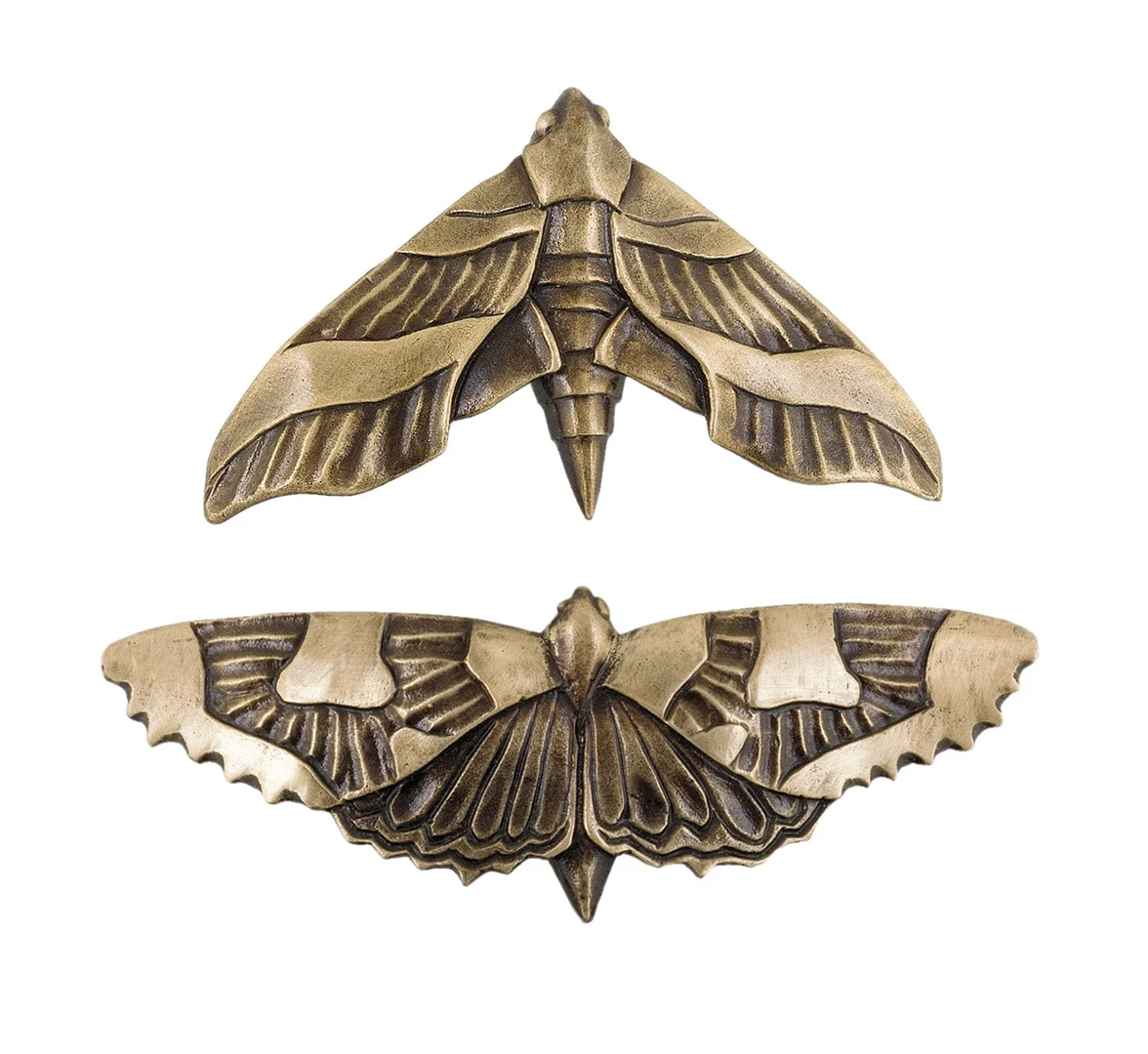We have this year enjoyed a refreshingly wet winter here in LA and as a result have an abundance of flowering trees and foliage so it should come as no surprise that we have a large insect population. While we may not enjoy the large mosquito population the moths and butterflies are a breathtaking delight. Attracted by white light, we usually glimpse hawk moths hanging on our patio wall but this year we are finding them in the house on closets, on shutters and in the bathroom.
We had a preview of what we could expect by insect life when the long legged ganglycrane flies started arriving. The sheer number of crane flies, which are often mistaken for gigantic mosquitoes, was so large that it has almost cured my phobia of this marginally attractive insect. However, when it comes to moths and butterflies their sheer beauty is undeniable and their shape and color have always been a source of inspiration for Martin.
While bronze can be colored by applying ferrous nitrate to a heated area to make a yellow amber patina or by applying copper nitrate for blue tone these patinas cannot begin to replicate the complex patterns that moths display in nature. So when portraying moths and butterflies in bronze, Martin has focused on the elegant and dramatic shapes of their wings and bodies and the natural gripping points that occur where the wings join the thorax.


